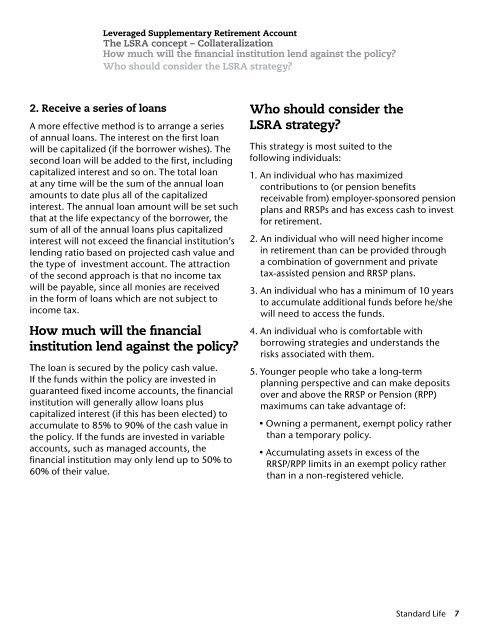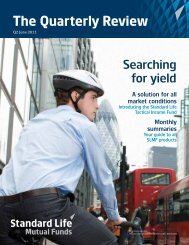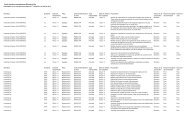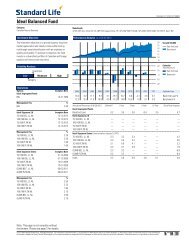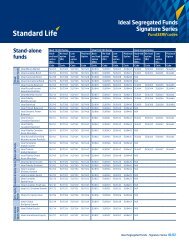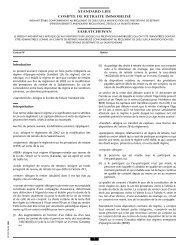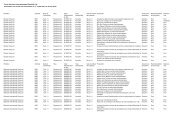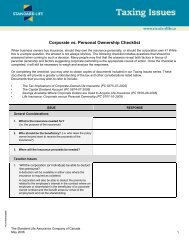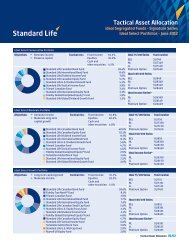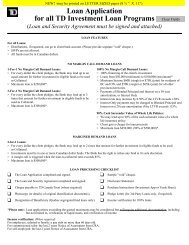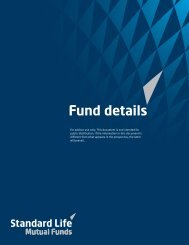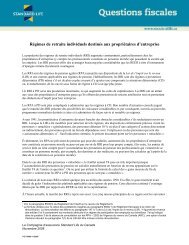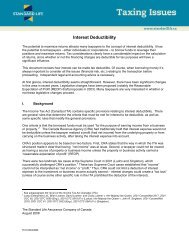Leveraged Supplementary Retirement Account - Standard Life
Leveraged Supplementary Retirement Account - Standard Life
Leveraged Supplementary Retirement Account - Standard Life
You also want an ePaper? Increase the reach of your titles
YUMPU automatically turns print PDFs into web optimized ePapers that Google loves.
2. Receive a series of loans<br />
<strong>Leveraged</strong> <strong>Supplementary</strong> <strong>Retirement</strong> <strong>Account</strong><br />
The LSRA concept – Collateralization<br />
How much will the financial institution lend against the policy?<br />
Who should consider the LSRA strategy?<br />
A more effective method is to arrange a series<br />
of annual loans. The interest on the first loan<br />
will be capitalized (if the borrower wishes). The<br />
second loan will be added to the first, including<br />
capitalized interest and so on. The total loan<br />
at any time will be the sum of the annual loan<br />
amounts to date plus all of the capitalized<br />
interest. The annual loan amount will be set such<br />
that at the life expectancy of the borrower, the<br />
sum of all of the annual loans plus capitalized<br />
interest will not exceed the financial institution’s<br />
lending ratio based on projected cash value and<br />
the type of investment account. The attraction<br />
of the second approach is that no income tax<br />
will be payable, since all monies are received<br />
in the form of loans which are not subject to<br />
income tax.<br />
How much will the financial<br />
institution lend against the policy?<br />
The loan is secured by the policy cash value.<br />
If the funds within the policy are invested in<br />
guaranteed fixed income accounts, the financial<br />
institution will generally allow loans plus<br />
capitalized interest (if this has been elected) to<br />
accumulate to 85% to 90% of the cash value in<br />
the policy. If the funds are invested in variable<br />
accounts, such as managed accounts, the<br />
financial institution may only lend up to 50% to<br />
60% of their value.<br />
Who should consider the<br />
LSRA strategy?<br />
This strategy is most suited to the<br />
following individuals:<br />
1. An individual who has maximized<br />
contributions to (or pension benefits<br />
receivable from) employer-sponsored pension<br />
plans and RRSPs and has excess cash to invest<br />
for retirement.<br />
2. An individual who will need higher income<br />
in retirement than can be provided through<br />
a combination of government and private<br />
tax-assisted pension and RRSP plans.<br />
3. An individual who has a minimum of 10 years<br />
to accumulate additional funds before he/she<br />
will need to access the funds.<br />
4. An individual who is comfortable with<br />
borrowing strategies and understands the<br />
risks associated with them.<br />
5. Younger people who take a long-term<br />
planning perspective and can make deposits<br />
over and above the RRSP or Pension (RPP)<br />
maximums can take advantage of:<br />
• Owning a permanent, exempt policy rather<br />
than a temporary policy.<br />
• Accumulating assets in excess of the<br />
RRSP/RPP limits in an exempt policy rather<br />
than in a non-registered vehicle.<br />
<strong>Standard</strong> <strong>Life</strong> 7


